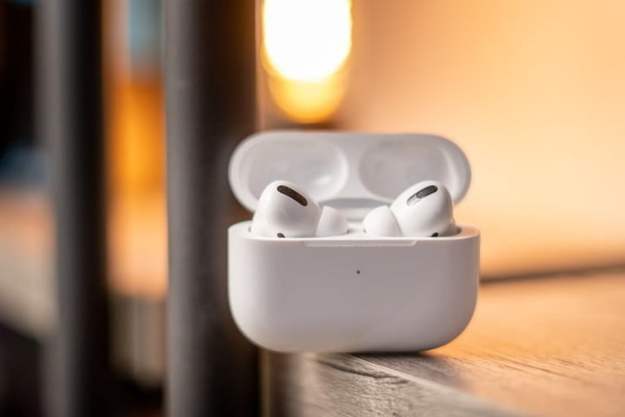There are a million takes on the 94th Academy Awards. The vast majority at this point likely are about Will Smith and Chris Rock, which is a shame on so many levels. It overshadowed the win of Summer of Soul and Questlove’s moving speech. It darkened the light sparked by Ariana DeBose’s moving opening speech for her West Side Story win. (It did not, however, take the shine off of Yuh-Jung Youn, or the kindness of Lady Gaga.)
But it did take away, at least a little, from CODA‘s win for Best Picture, which actually is what we’re here to talk about. CODA was a great movie, a different movie, and a seminal moment for Apple TV+. It’s the service’s first Oscar for Best Picture, the first Best Picture win for any streaming service.

And so it is tempting to say something like: “With the win, Apple has, in the span of a couple quick years, achieved the stature of non-Hollywood houses like HBO.”
That’s true. But it doesn’t change the fact that Apple TV+ is not — nor will it ever be — HBO.
It’s rumored that Apple spent more than $10 million to market CODA, which is an acronym for “Children of Deaf Adults,” for the Academy Awards. That’s not uncommon, actually. There’s an entire industry devoted to Oscar lobbying publicly and privately for a film to win an award. Everyone does it, even if they don’t have anywhere near the amount of cash that Apple has laying around.
What makes HBO different is history and legacy. It’s not fair to say that Apple has bought its way into the Academy Awards. (Though it’s not entirely incorrect, either.) A good movie is still a good movie. A good series is still a good series. And Apple TV+ has an inordinate number of both given its mere two years in existence. That’s due in part to the folks running the show, but also due to dollars a year thanks to its hardware business, which gave the service a built-in subscriber base thank to all the free trials that saw a great deal of extension after the first year. There are a lot of iPhones and iPad and Macs out there, plus all the other platforms on which Apple TV+ is available.

That’s the obvious part. But you also have to consider lineage. HBO was born nearly 50 years ago. Long before the personal computer, never mind the internet, cellular networks and smartphones. HBO is a premium channel that from the outset required two subscriptions — first to a cable company, which itself was just really gaining traction in the 1980s in much of America, and then to HBO itself.
Apple TV+, like Netflix and Amazon Prime Video, were built on the foundations paved by HBO decades ago.
You got what you paid for back then, which was movies and series and sports and comedy, without advertising — all in a time that didn’t have a dozen different movie channels living alongside traditional broadcast channels, which maybe showed a half-dozen flicks a week, at best. And HBO wasn’t bound by the same puritanical standards as broadcast or even cable TV back then. Hell, you didn’t even have to have a subscription to HBO to get a glimpse of the utopia that was R-rated movies, or scandalous series like Real Sex. Who among us over 40 years old hasn’t wasted a few hours squinting at scrambled video, in hopes of seeing a single unblurred body part, if only for a second.
And all of that is before you remember that HBO is where you found the best stand-up comedy back in the 1980s and ’90s, long before Netflix or Amazon. It was where you watched Wimbledon, of all things. (The first thing broadcast on HBO, interestingly enough, was an NHL game.) It’s where you watched things that simply weren’t available anywhere else.

So, yes, it truly is amazing that Apple TV+ managed a Best Picture Oscar on top of all the other accolades. (And, by the way, being a “streamer” isn’t one of them. Apple TV+ encodes and decodes video the same way as everyone else. It’s just a matter of where it’s available. And in 2022, you’re either available everywhere, or nowhere.) This isn’t a knock of Apple TV+ at all. I pay for it. I’ve enjoyed a surprising number of shows and movies, from Ted Lasso on. (Severance is excellent.)
But Apple TV+ was built on the ground that HBO paved for so many decades before it. Same goes for Netflix and Amazon and any others in the new generation. It’s just that the field has been leveled, so to speak. HBO breached the barrier to entry all those years ago, and those barriers simply don’t exist today, at least not in the same ways.
And those of us on the other side of the screen get to benefit from it.
Editors' Recommendations
- Don’t like giant ads on Amazon Fire TV? Then don’t buy one
- T-Mobile adding a free year of Apple TV+ to its most expensive plans
- I was wrong. Apple TV 4K is the best streamer you can buy
- Where to watch the 2021 Oscar-nominated films
- 2020 Golden Globes could herald the first Best Picture Oscar win by a streamer




